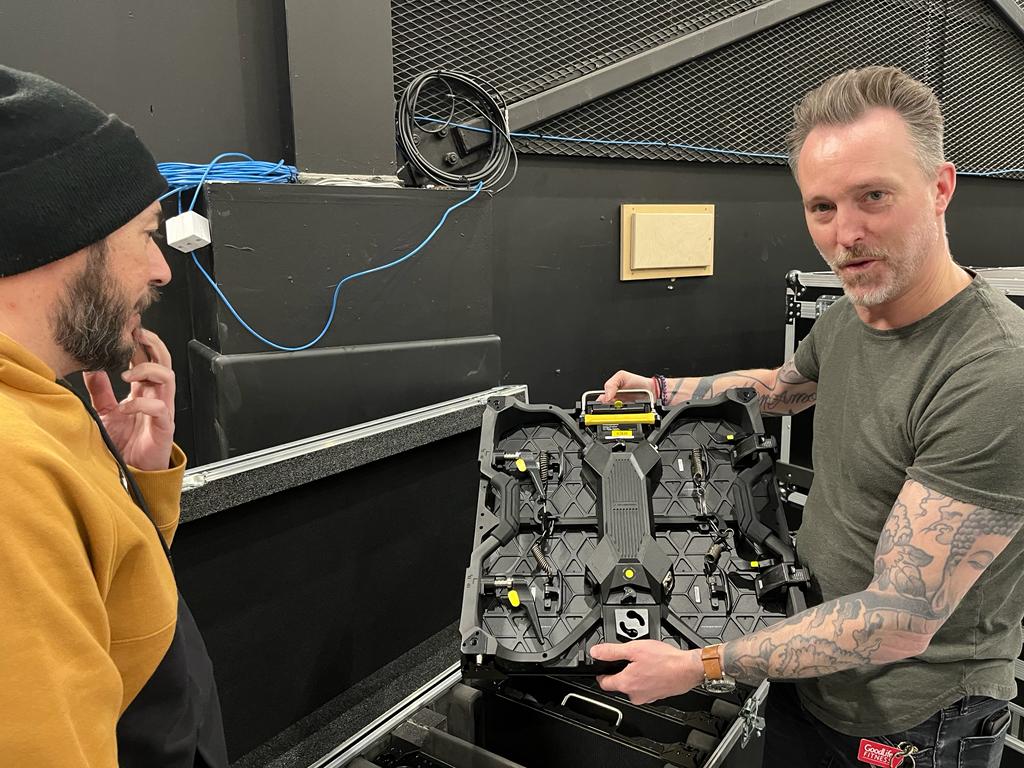Introduction
Greetings, fellow aficionados of cinema! Our focus today is on the cutting-edge concept of virtual production, which has been causing a stir in the film industry. This revolutionary technology is revolutionizing the methods by which we produce and consume visual media, and it is imperative that we delve deeper into its workings. So, please take your seats as directors, and join us as we embark on an exciting journey into the realm of virtual production!

The Evolution of Filmmaking
Filmmaking has come a long way since the days of silent black-and-white films. The advent of color, sound, and special effects marked significant milestones in the industry. But today, we’re witnessing a revolution that’s reshaping the very fabric of filmmaking: the rise of virtual production.
Virtual production blends traditional filmmaking methods with cutting-edge technology, creating a hybrid process that’s as innovative as it is effective. It’s like having a high-tech toolbox at your disposal, filled with tools like CGI, Augmented Reality, and Motion Capture. And the best part? The toolbox is always expanding, thanks to the relentless pace of technological advancement.
Understanding Virtual Production
So, what exactly is virtual production? In simple terms, it’s a method of filmmaking that uses computer-generated imagery (CGI), augmented reality, motion capture, and other technologies to create realistic environments and effects on a virtual set. It’s like building a film set in a computer, then stepping into it through the magic of technology.
One of the key players in virtual production is Unreal Engine, a real-time 3D creation tool. Unreal Engine is like the wizard behind the curtain, powering the visuals and making the impossible possible. With Unreal Engine, filmmakers can create stunning, hyper-realistic scenes that were previously unimaginable.
The Virtual Production Process
The virtual production process can be divided into three main stages: pre-production, production, and post-production.
During pre-production, filmmakers plan and design the virtual set using software tools. This is where the magic begins, as directors and designers collaborate to bring their vision to life in the digital realm.
Next comes the production stage, where the actual filming takes place. But instead of shooting on a physical set, actors perform in front of LED walls that display the virtual environment. This allows directors to make real-time adjustments to the scene, from changing the lighting to tweaking the background.
Finally, in the post-production stage, the footage is edited and polished to perfection. Any additional visual effects are added, and the final touches are made to ensure the film is ready for its big-screen debut.
The Benefits of Virtual Production
Virtual production offers a host of benefits that are making filmmakers sit up and take notice. For starters, it gives directors unprecedented creative control. They can manipulate many aspects of their productions in real-time, from setting up camera angles to controlling special effects.
Virtual production is also a boon for cost and time efficiency. It reduces the need for physical sets, which can be expensive and time-consuming to build. Plus, it allows actors to interact with digital characters and environments, enhancing their performances and making the scenes more believable.
Case Studies
Virtual production isn’t just a theoretical concept; it’s being used right now in some of the biggest films and TV shows. Take “The Mandalorian”, for example. The popular Star Wars series used virtual production to create its stunning alien worlds and action-packed scenes. And it’s not alone. From “Avengers: Endgame” to “Jurassic World: Fallen Kingdom”, more and more filmmakers are embracing virtual production.
The Future of Virtual Production
As we look to the future, it’s clear that virtual production is here to stay. With technology advancing ata breakneck pace, the possibilities for virtual production are expanding every day. We can expect to see even more realistic visuals, more immersive environments, and more innovative storytelling techniques.
Moreover, as virtual production becomes more accessible, we’ll likely see a surge in its use not just in big-budget films, but in independent cinema as well. This democratization of technology could lead to a new wave of creativity in the film industry, as filmmakers of all stripes have the tools to bring their visions to life.
Conclusion
Virtual production is more than just a buzzword; it’s a game-changer for the film industry. By blending traditional filmmaking techniques with cutting-edge technology, it’s enabling filmmakers to push the boundaries of what’s possible and create stunning, immersive content.
So, whether you’re a seasoned director, an aspiring filmmaker, or just a film enthusiast, it’s worth keeping an eye on virtual production. Because one thing’s for sure: this technology is set to play a starring role in the future of filmmaking.
And that’s a wrap! We hope you enjoyed this deep dive into virtual production. Stay tuned for more insights into the exciting world of filmmaking. Until next time, keep dreaming, keep creating, and keep pushing the boundaries of what’s possible!


